The Most Splendid Housing Bubbles in America, August Update: First Price Drops Appear, All in the West
The Case-Shiller index, which lags reality on the ground by 4-6 months, is starting to pick up the price drops in Seattle, San Francisco, San Diego, Los Angeles, Denver, and Portland.
By Wolf Richter for WOLF STREET.
The housing market is going through some navel gazing, as many buyers evaporated at current prices and mortgage rates. They’re still out there, but they’re a lot lower, and many sellers haven’t figured that out yet, though some started cutting their asking prices but not nearly enough, and deal volume has plunged.
Sales volume of existing homes plunged by 20% from a year ago across the US, and by 31% in California, and by 41% in San Diego. Median prices in the West have begun to drop, and in the San Francisco Bay Area fell below year-ago-levels, including by 8% in San Francisco. Sales of new houses plunged by nearly 30% year-over-year across the US, and in the West by 50%, as the supply of new houses has exploded to 11 months, the highest since the peak of Housing Bust 1. And big institutional buyers have started to pull out of this market because they don’t want to overpay. This has been going on for months.
But today, the S&P CoreLogic Case-Shiller Home Price Index, which lags reality on the ground by 4-6 months, finally picked up the first month-to-month price declines – all of them in the West: the metros of Seattle, San Francisco, San Diego, Los Angeles, Denver, and Portland.
Today’s release of the Case-Shiller Index was for “June,” which consists of the three-month average of closed home sales that were entered into public records in April, May, and June, of deals that were made a few weeks to a couple of months earlier, roughly in March through May.
By mid-April, the average 30-year fixed mortgage rate pierced the 5% mark and has stayed above 5% ever since. So here we go.
The Most Splendid Housing Bubbles where prices fell.
Seattle metro house prices dropped by 1.9% in “June” (three month moving average of April, May, and June) from “May,” wiping out in one month the gains of the prior two months plus some. This was the first month-to-month decline since October 2019, after a totally ridiculous spike. It chopped the year-over-year spike down to 9.3%, from 27% a few months earlier.
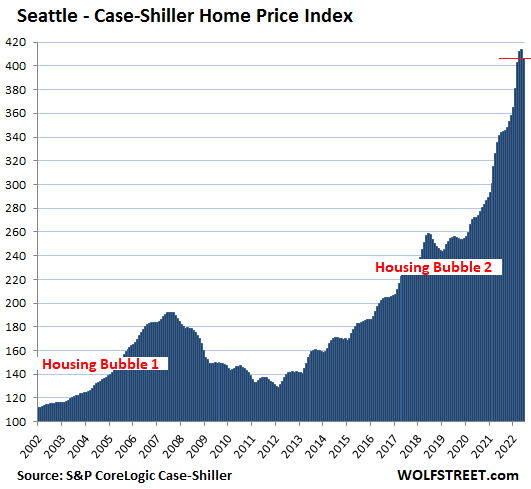
San Francisco Bay Area house prices fell by 1.3% in “June” from May, below the level of April, and the first month-to-month decline since June 2020, wiping out in one month the gains of the prior two months. This whittled down the year-over-year spike to 16.1%, from over 24% in prior months.
For the Case Shiller Index, the metro consists of the five-counties covering San Francisco, part of Silicon Valley, part of the East Bay, and part of the North Bay.
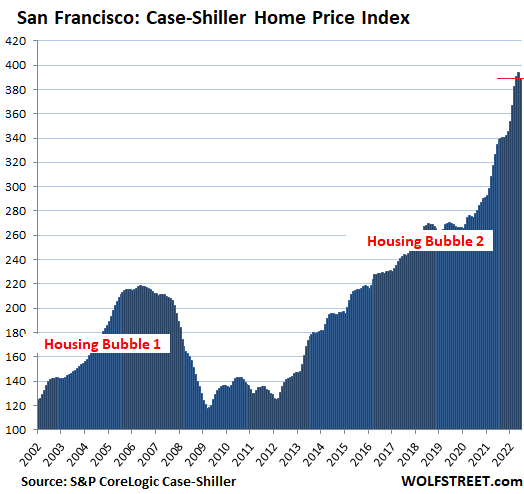
San Diego metro house prices fell by 0.7% in “June,” the first month-to-month decline since October 2019, after a ridiculous spike. The index dropped below the April level, thereby wiping out in one month the gains of more than two months.
This 0.7% decline reduced the year-over-year gain to 21.6%, from the near 30% gains a few months ago.
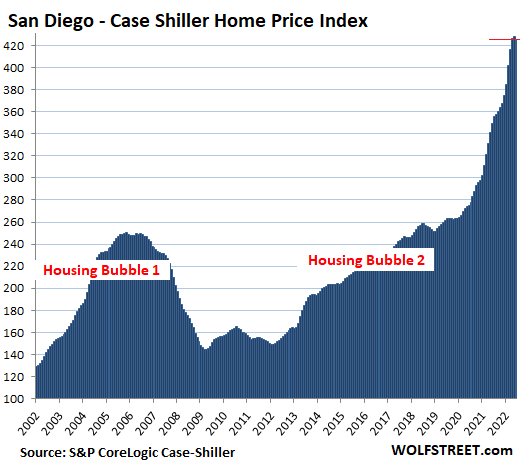
The index value of 425 for San Diego means that home prices shot up by 325% since January 2000, when the index was set at 100, despite the plunge in the middle (CPI inflation amounted to 75% over the same period).
Los Angeles metro house prices fell by 0.4% in June from May, which whittled the year-over-year price spike down to +19.4%.
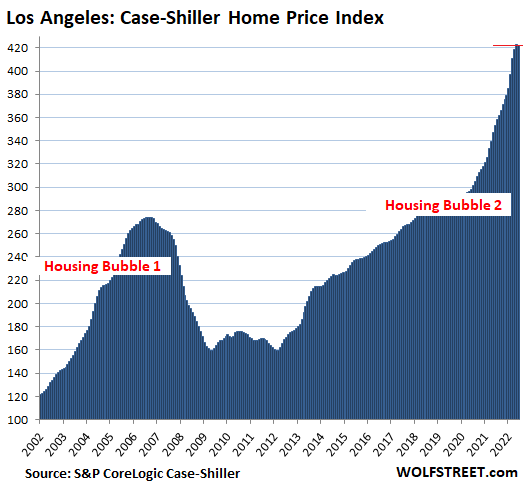
Denver metro house prices dipped 0.1% in June from May, whittling down the year-over-year gain to 19.3%:
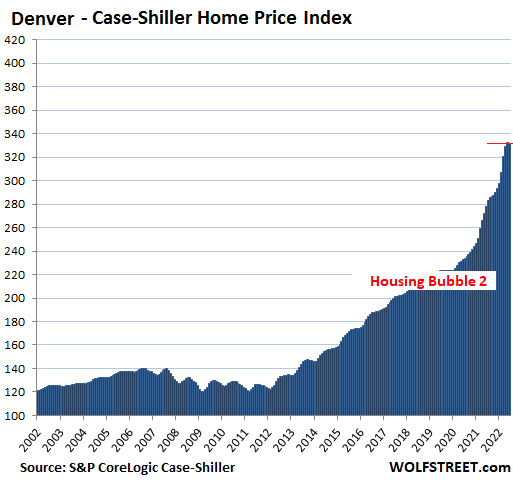
Portland metro house prices dipped 0.1% in June from May, which whittled down the year-over-year gain to 14.7%. The month-to-month dip, the first since October 2019, is too small to mark on this 20-year chart:
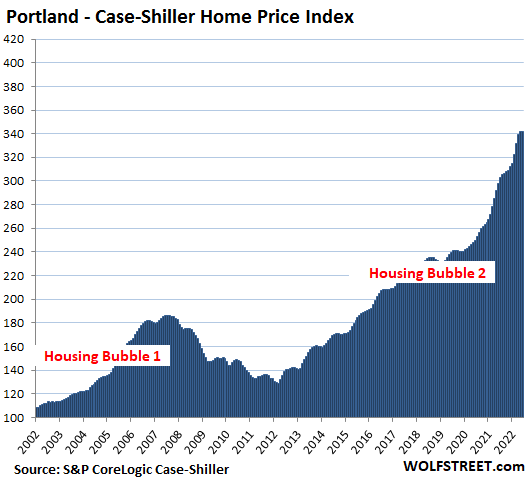
House price inflation. The Case-Shiller Index uses the “sales pairs” method. The sales in the current month are compared to when the same houses sold previously. The price changes within each sales pair are integrated into the index for the metro, and adjustments are made for home improvements (methodology). In other words, the index tracks the change in dollars it took to buy the same house over time, which makes it a measure of house price inflation.
The Most Splendid Housing Bubbles where prices “decelerated” or stalled.
Miami metro: +2.3% for the month, “decelerating” from month-to-month gains in the 3.5% range in prior months. This whittled down the year-over-year gains to +33% from +34% in the prior month, ridiculous mania, all of it.
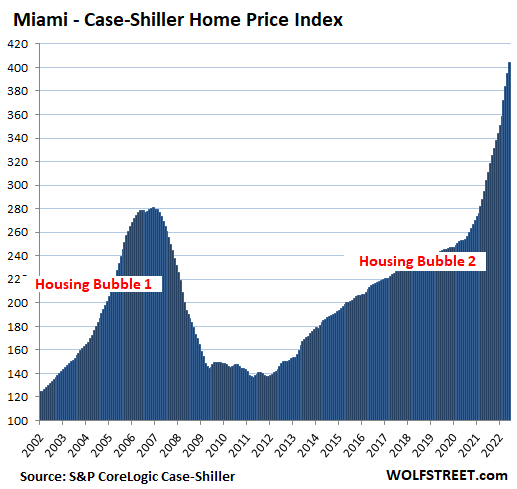
Tampa metro: +2.2% for the month, decelerating from 3.7% earlier this year. This whittled down the year-over-year spike to 35.0% from 36% in the prior month. Mind-blowing crazy.
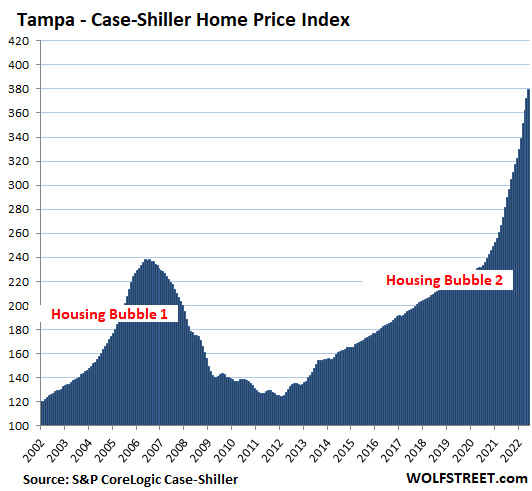
Phoenix metro: +1.0% for the month, decelerating from +2.5% in April, and from +3.0% earlier in the year. This whittled down the year-over-year spike to +26.6% from +32% earlier this year:
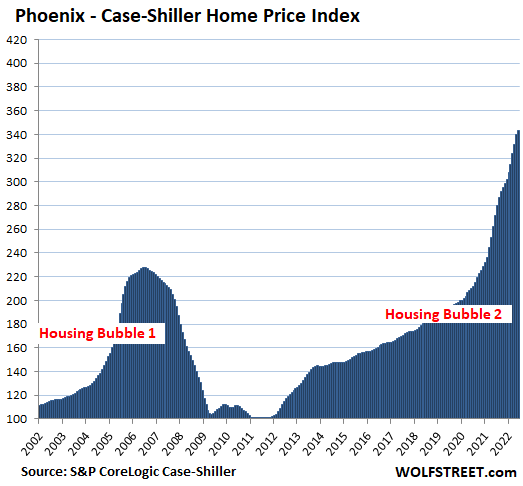
Boston metro: +0.6% for the month, decelerating from 1.9% in the prior month, and from +2.8% earlier this year. This whittled down the year-over-year gain a tad to 14.9%:
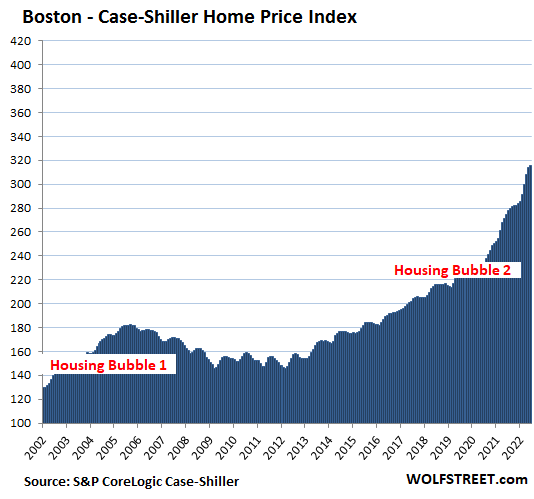
Washington D.C. metro: +0.0% for the month, no change, decelerating from 2.9% earlier this year. This whittled down the year-over-year gain to +10.8%:
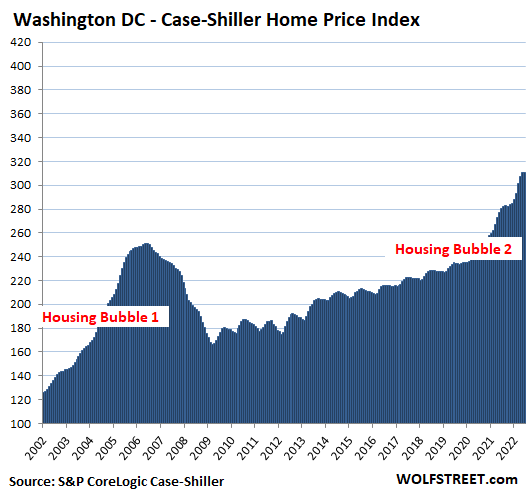
Las Vegas metro: +1.5% for the month, decelerating from +2.1% from the prior month, and from over +3% earlier this year. This whittled down the year-over-year gain to +25.1%:
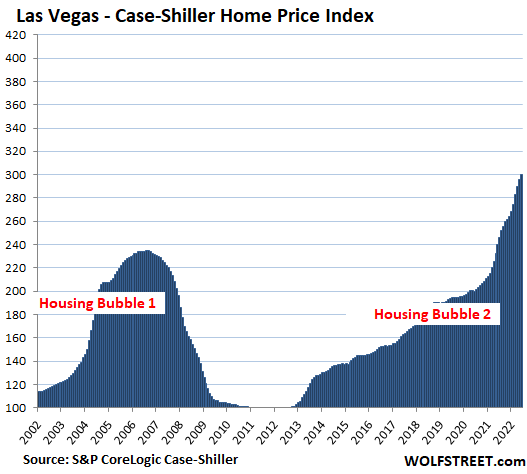
Dallas metro: +2.6% for the month, same as in the prior month, but decelerating from over +4% earlier this year. The year-over-year gain remained at +30.8%:
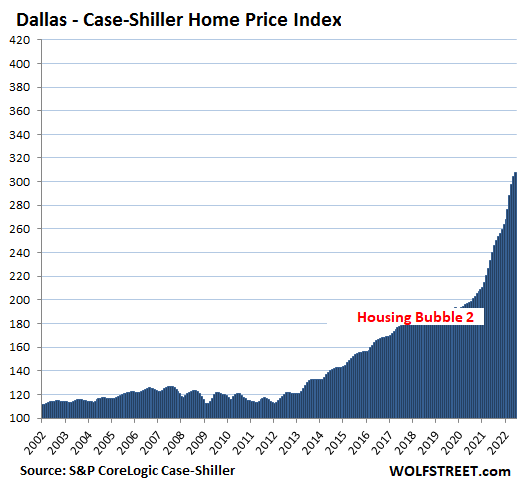
New York metro, the huge market within commuting distance to New York City: +1.1% for the month, decelerating from 1.6% in the prior month. The year-over-year gain of +14.6% has been roughly unchanged for three months.
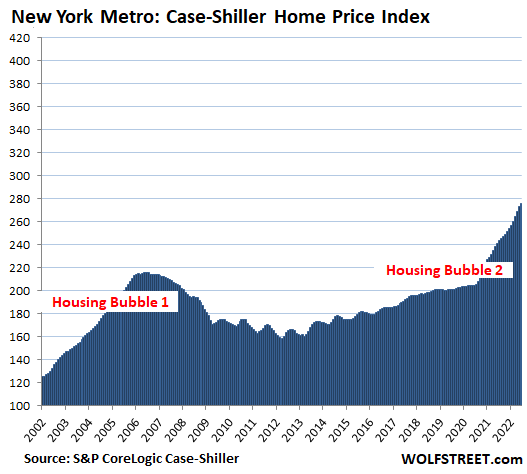
With its index value of 276, the New York metro has experienced 176% house price inflation since January 2000. The remaining cities in the 20-City Case-Shiller Index (Chicago, Charlotte, Minneapolis, Atlanta, Detroit, and Cleveland) have had less house price inflation and don’t qualify for this illustrious list.
Enjoy reading WOLF STREET and want to support it? Using ad blockers – I totally get why – but want to support the site? You can donate. I appreciate it immensely. Click on the beer and iced-tea mug to find out how:

Would you like to be notified via email when WOLF STREET publishes a new article? Sign up here.
![]()
[ad_2]
Source link


